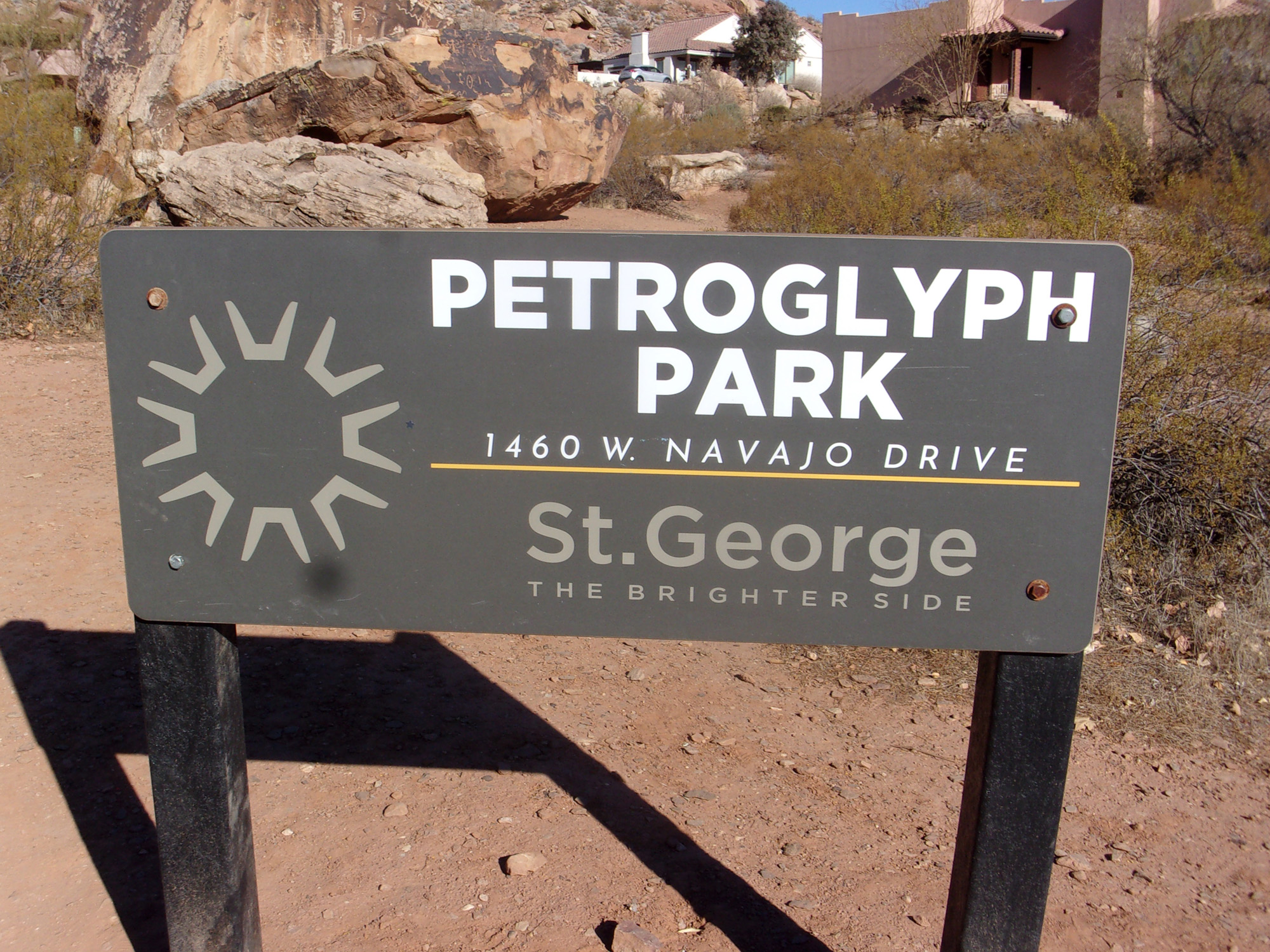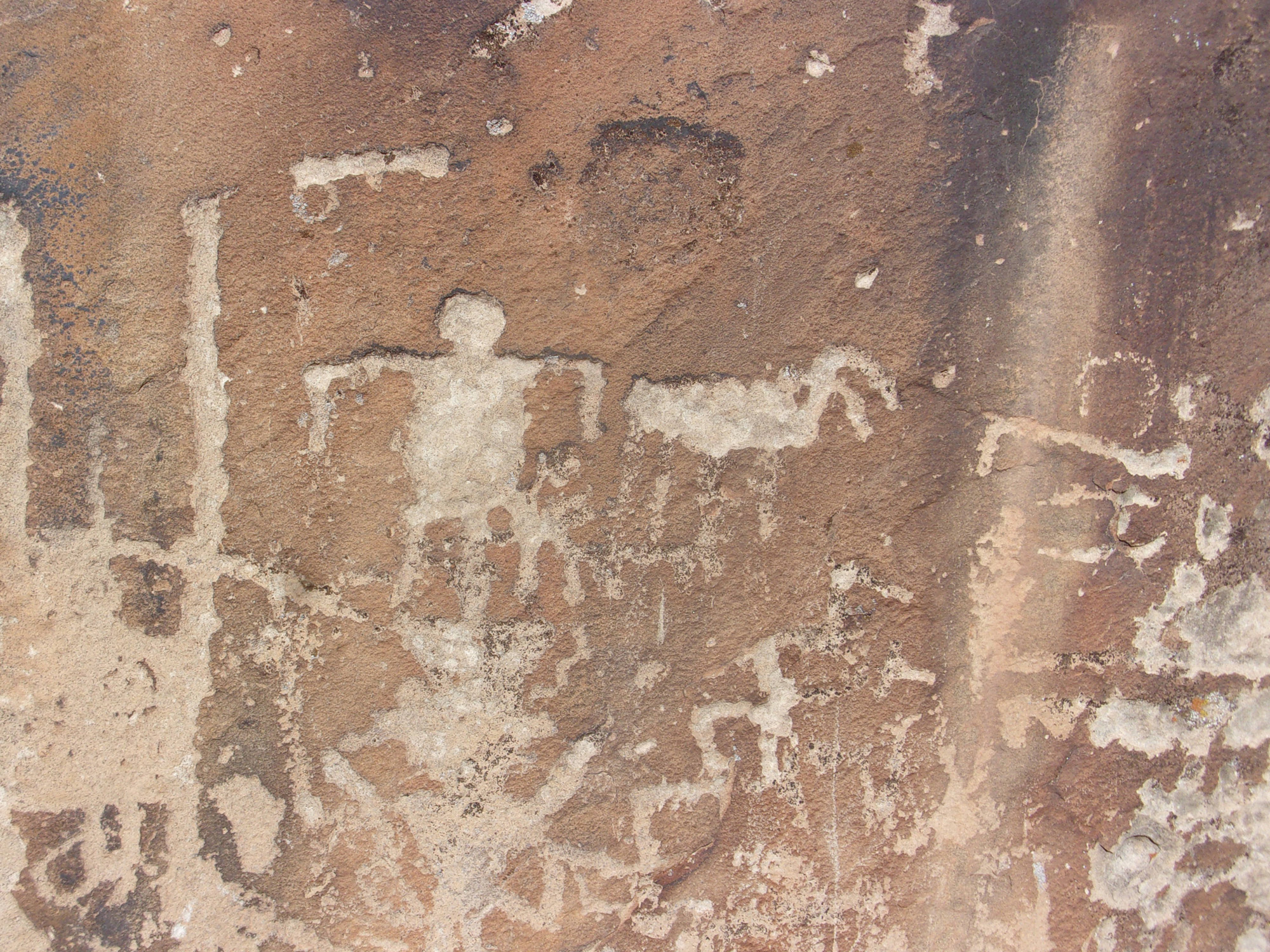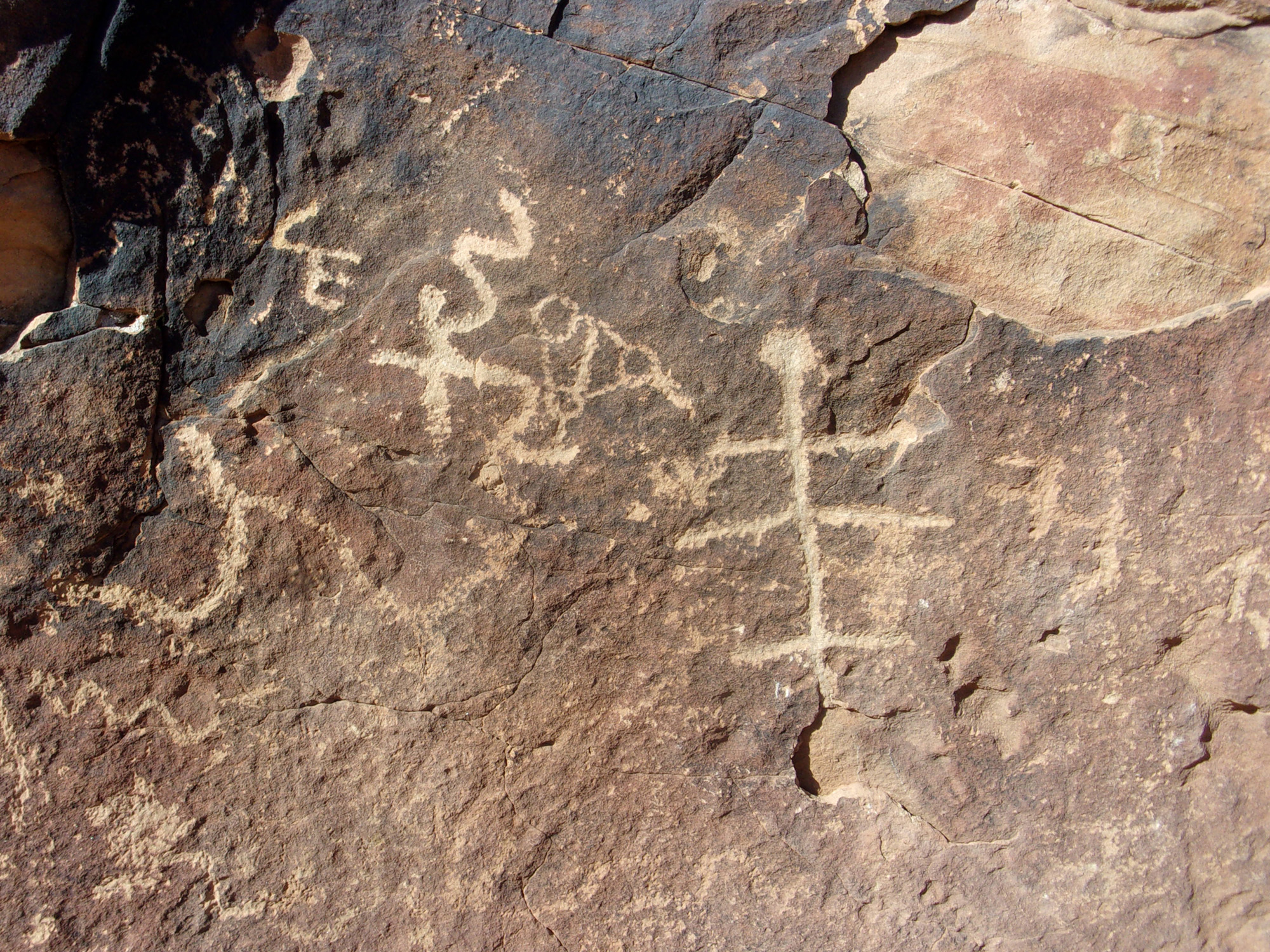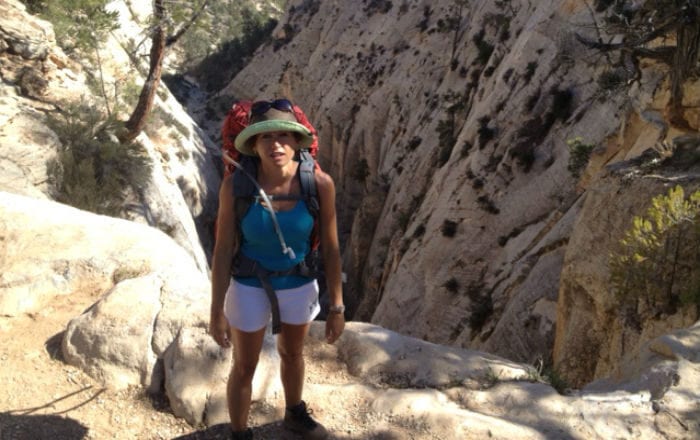
Bloomington’s Petroglyph Park
– By Tom Garrison –
Location: Petroglyph Park in Bloomington, a part of St. George
Difficulty: Easy with no strenuous sections.
Average Hiking Time: Less than 1/2 hour at a leisurely pace.
Elevations: Approximately 2,490 feet trailhead elevation with no discernable elevation change.
Family Friendly: Yes.
Getting There: From St. George, go south on Interstate 15 to the Brigham Road exit (exit 4). Follow the exit ramp to a traffic circle, go halfway around the circle, and exit onto Pioneer Road going south. Approximately .6 mile from the traffic circle, turn right (west) onto Man O War Road. This road crosses the Virgin River, and after .7 mile from the Pioneer Road turnoff, turn left (south) onto Bloomington Drive. Bloomington Drive winds through the neighborhood, and 1.3 miles from the Man O War turnoff, turn left (west) onto Navajo Drive, with Bloomington’s Petroglyph Park being .1 mile ahead on the right. (The park’s address is 1460 West Navajo Drive, St. George.) Be aware that parking is scarce, you must park alongside the road. There are no curbs or gutters, let alone a parking lot.
It’s mid-winter, blustery and cold, what to do? You’re tired of being housebound. You could go on a nice five-mile hike and freeze. Or, how about a quick adventure, 30 minutes or so, to an urban petroglyph site?
Who likes ancient rock art (petroglyphs)? Just about everyone. Southwest Utah has many petroglyph sites, and my wife, Deb, and I have explored several of them. Recently, I found a new site nestled in the Bloomington area of St. George—Bloomington’s Petroglyph Park. This small (about ½ acre) rustic park features two gigantic boulders covered with petroglyphs. Ancient rock art is surrounded by suburbia near the base of Bloomington Hill.
Bloomington was settled in 1870 when William Carpenter founded the town. If you explore this petroglyph site, you will be following in the footsteps of Harold and Nellie Chesler, who, with their two grandchildren, are credited with discovering these petroglyphs when the kids scaled a boulder and found the ancient rock art.
Bloomington’s Petroglyph Park is a small park meant to preserve the petroglyphs in the middle of an ordinary neighborhood. Native Americans visited and likely settled in the Bloomington area long before 1870. The rock art they left behind is evidence of their activity.

Deb and I began our expedition to Bloomington’s Petroglyph Park on a cold Saturday morning in mid-January, which happened to be my birthday. Be aware that parking is scarce, you must park alongside the road. There are no curbs or gutters, let alone a parking lot.
We parked alongside the park at about 10:30 am with the temperature in the mid-40s and of course, a cold wind under a deep blue Utah sky. The trailhead elevation is 2,4901 feet with no discernable elevation change.
This historic site is a non-renewable cultural resource, so please follow some simple rules: Do not touch, alter, or damage the petroglyphs and stay on the trails; don’t trample the native vegetation.

The park has some native vegetation and two benches to rest from all the walking. We strolled around the park’s perimeter, about 1/10 mile, checking all boulders for glyphs. It seems as if all the petroglyphs are concentrated on two huge rocks in the center of the park. We found many different carvings—human and animal forms, squiggly lines, and circles. Some petroglyphs are wearing off due to the ravages of time, but most remain clearly visible. Be sure to check high and low and the backsides as the glyphs are on all sides of the boulders. Don’t overlook a glance to the northwest, a prominent landmark, Bloomington Hill, dominates that view.
The same thought always occurs to us when we examine petroglyphs—what do they mean? Over the years, I’ve done considerable research into the meaning of Native American petroglyphs, and all experts agree—no one really knows.

A National Park Service article (2023) on reading rock markings says:
These include abstractions like spirals, dots, geometric patterns, or more recognizable forms like animals, humans, and handprints. Whatever they represent, these curious figures provoke within many people the desire to understand. … Though we may not understand them, they often inspire within us a sense of awe and wonder.
Whatever they mean, it is always a treat to find and examine them.
After wandering and examining petroglyphs for about 30 minutes, we ended this short adventure. Being mid-winter and cold, we were the only people in the park. If you want to explore a small area with many petroglyphs in a short time, consider visiting Bloomington’s Petroglyph Park.




